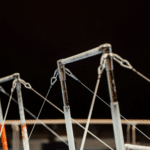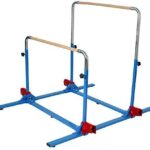- A Gymnastics Bar at Home (is it worth it?)
 Training with a gymnastics bar at home is a popular way for many gymnasts to stay active whilst not at practice. However, a gymnastics bar can be expensive and there are multiple factors to consider before making a purchase. In this guide, we will explore everything about having a gymnastics bar at home and help… Read more: A Gymnastics Bar at Home (is it worth it?)
Training with a gymnastics bar at home is a popular way for many gymnasts to stay active whilst not at practice. However, a gymnastics bar can be expensive and there are multiple factors to consider before making a purchase. In this guide, we will explore everything about having a gymnastics bar at home and help… Read more: A Gymnastics Bar at Home (is it worth it?) - The Best Gymnastics Bar For Home (Top Picks)
 Gymnastics bars for home are a fantastic training aid for aspiring gymnasts, but you need to make sure you have a set that will be suitable for your child’s age and ability and fits your budget. Undoubtedly, the best gymnastics bar for home right now is the Tumbl Trak 5-In-1. Not only is it popular… Read more: The Best Gymnastics Bar For Home (Top Picks)
Gymnastics bars for home are a fantastic training aid for aspiring gymnasts, but you need to make sure you have a set that will be suitable for your child’s age and ability and fits your budget. Undoubtedly, the best gymnastics bar for home right now is the Tumbl Trak 5-In-1. Not only is it popular… Read more: The Best Gymnastics Bar For Home (Top Picks)
